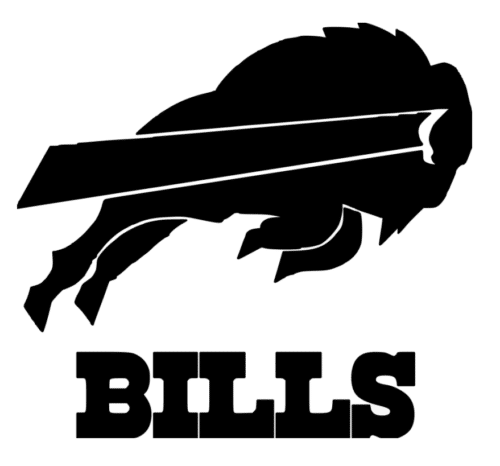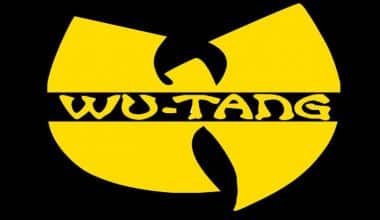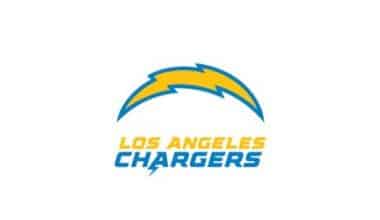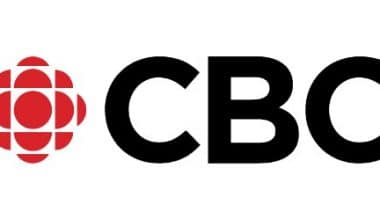The Buffalo Bills’ logo is a stylized version of the team mascot set against a red background. The strip adds to the impression of speed and motion, lending energy to the talisman, a minimalistic buffalo representing resolve and strength. However, the question is, “What is the history behind the Buffalo Bills logo and what does it represent?”
Well, let’s find out…
What Exactly Are the Buffalo Bills?
The Buffalo Bills are a National Football League team that competes in one of the four American Football Conference divisions. It was founded in 1960 and immediately joined the AFC. The club is now based in the Buffalo – Niagara Falls Metropolitan Statistical Area and Highmark Stadium is located in Orchard Park, New York.
Overview
The Buffalo Bills are an American professional soccer team based in Buffalo, New York. The team began in the AFL and is now a member of the National Football League’s American Football Conference East Division. The team plays its home games at Highmark Stadium in Orchard Park, New York, and is the only football club in the state of New York.
Barney Leppers founded the Buffalo All-Stars club in 1915, later renamed the Niagaras in 1918 and the Prospects in 1919. The Prospects served as the foundation for the later Buffalo All-Americans, who joined the League that evolved into the NFL in 1920. The club was renamed the Bisons in 1924. The team played under this name until 1927, returning for only one season in 1929.
When the All-American Football Conference was formed after the war, and there were already Buffalo Bison teams in baseball and hockey, the new name for the football club should have been chosen. The club’s name was changed to the Buffalo Bills in 1947.
Buffalo is the only team in the League to win four consecutive conference championships and play in the Super Bowl. All four finals were lost.
Ralph Wilson, a businessman, owned the club from its inception until he died in 2014. Terrence Pegula and his wife Kim have owned the team since October 2014.
Buffalo Bills Logo: Evolution
Each of the four Buffalo Bills logos is distinct. They do, however, share a common element: the Buffalo. Initially, the artists depicted two animals at once. To emphasize the connection with sports, they added a sizeable elliptical ball and two football players in white and blue team uniforms to the drawing. Then they went for minimalism, reducing the number of characters to one: one player, one Buffalo.
The year 1970 marked a watershed moment for the club. A simplified logo with a red animal silhouette appeared at the time. It was only used for three years but served as the foundation for the following – permanent – emblem.
What Does the White Part of the Buffalo Bill Logo Represent?
The white part of the logo has sparked debate online, with some claiming it’s a horn and an eye.
In 61 years, the Buffalo Bills have had five different logos. The first logo raced the fields in 1960. It was updated four times: in 1962, 1970, 1974, and 2002. However, fans were dissatisfied with the previous redesign. As a result, the 1974 emblem has retained its enviable position. To save time, look at the different stages the logo has gone through over the years.
The Blue Emblem: 1960
The original Buffalo Bills logo lasted only a year. A blue football framed it. The other graphic elements were contained within this frame. A buffalo herd and two football players were among them. The players were dressed in their team’s uniform. The caption—Buffalo Bills—can be found curved above the animals and players. It was written boldly in uppercase letters.
The Brown Emblem: 1962
The first update was released in 1962. It was similar to the original logo, but there were some differences. The colour brown took centre stage. The artist chose to depict a single buffalo and a player. The player was dressed in a blue jersey with white and 31 stripes. A white and red helmet with a buffalo symbol also protects the player. The brand’s name was not present. The logo ruled for nearly seven years.
The Red Emblem: 1970
The Buffalo Bills logo was updated for the second time in 1970. The goal was to make the logo as simple as possible. The club decided to go with a solid red silhouette. It was the legendary Buffalo, standing to the right. Also, it was the only graphic element from the previous logo design. It lasted about three years for the team.
The Current Emblem: 1974
In 1974, the club’s search for a simple yet memorable logo continued. The company’s previous logo inspired this design. The designer chose a leaping or jumping buffalo over a standing buffalo. In addition, rather than a red bison, he chose a blue bison with a red stripe flaming from its white horn. This elegant trademark is dressed in the club’s traditional colours.
The Unused Emblem: 2002
Tom Donahoe, the team’s general manager, wanted a new logo and jersey for the club in 2002. As a result, he obtained a stylized letter—B trademark. A wild buffalo was included with the letter. This iconic letter was created using two red and one blue bullet. Because fans dislike it, this logo could not be used on the field. As a result, the 1974 logotype returned to illuminate the areas.
1974-Present Buffalo Bills Logo
Stevens Wright, an aerospace designer and commercial illustrator, created the Buffalo Bills logo. Jere Wright, his wife, worked as a production manager for NFL Properties, which handled all of the League’s licensing and branding. Jere brought her husband’s abilities to David Boss’ attention, who was the director of NFL Properties’ creative services division at the time. The boss immediately tasked Stevens with creating a new Bill logo.
In the summer of 1973, Stevens Wright submitted several designs to the Bills. Team general manager Robert Lustig responded with a letter expressing strong support for the design that would eventually become the charging Buffalo. The logo’s creator has always been proud of it, which is not surprising given that it was created in 1974 and is still used by the team today. They couldn’t find a replacement for him: the only new option proposed for consideration in 2002 was immediately rejected by fans as ineffective.
The Buffalo Bills’ emblem was as schematic and minimalistic as it had been since 1970. This logo is more dynamic than the previous one. The movement is indicated by the bison’s flying position and a slanting red stripe streaming from its white horn. This image incorporates all of the football club’s colours except dark blue. The completed logo debuted during the 40th season.
Colours and Font
The Buffalo, the club’s main symbol, is depicted abstractly. However, this did not stop the artist from capturing a sense of dynamics, displaying the animal’s personality, and expressing its uniqueness. The silhouette of a running buffalo and an expanding red line extending from the white horn to the emblem’s invisible left border indicate movement.
The logo designer used no labels. As an artist, he paid close attention to the graphic component and executed it flawlessly. Jere Wright used only three colours: royal blue for the animal, red for the stripe, and white for the background and tiny details.
As a result, he combined the primary colours from the official Buffalo Bills palette without overburdening the logo. And the version he created has become a classic: the club still cannot “get rid” of its iconic red and blue badge, which fans adored.
Who Created the Buffalo Bills Logo?
Several graphic designers have worked for the club. Stevens Wright created the blue leaping bison, which has been used for the longest time. Stevens Wright, an aerospace designer and commercial illustrator, was introduced to this project by his wife, Jere Wright.
She used her position as NFL’s production manager to pitch David Boss on her husband’s unique talent. Stevens presented the board with several logo options. They fell in love with the one preferred by team manager Robert Lustig.
Why Does the Buffalo Bills Logo Work?
The Logo Is Reliable:
Powerful logos endure through the ages. It would be best if you remembered this. Even though Bill’s logo has been through four design studios, it has retained its charm. The bison has appeared in all designs for over five decades. This has left an imprint on people’s minds.
The Buffalo Bills Logo Is Understated:
Any logo must be modest to convey its messages coherently. Simple emblems are the most iconic across all industries. They are made up of fewer graphic elements. Bill’s logo is in the same category. It has one different symbol and three eye-catching colours. The Bills logo stands out with this vibe.
The Buffalo Bill Logo Can Be Scaled:
The world’s most recognizable logos can appear on any channel without compromising their qualities. And because the Bills mascot is a member of the League of classic emblems, it can play on any marketing field without harm. Because of its compact design, it is capable of performing this critical function.
The Buffalo Bill Logo Is One-Of-A-Kind:
Fans and visual aids abound on match days. Nonetheless, the Buffalo Bills logo can be seen. It stands out because it is distinct and visually appealing. Finding a trademark so close to the racing bison isn’t easy. In practice, it is far ahead of the herd.
The Buffalo Bill Logo Is Not Forgettable:
The human brain is bombarded with more information than it can remember. This emphasizes the importance of keeping all logo designs clean. This insight inspired the creation of the Bills’ mascot. It’s so simple that fans will remember it. Again, this is due to the mascot’s use of fewer graphic elements.
Buffalo Bills Symbol And Logo Shape
#1. The Football:
The frames for the first and second logotypes were footballs. This spherical symbol is the main object used in the Buffalo Bills game. It allows fans worldwide to connect the team to the exciting but intense sports the brand focuses on. Players can also be found as icons.
#2. The Bison:
The Buffalo remains the primary graphic element in all Buffalo Bills logos. In America, it is revered as a sacred animal. The club chose this animal because of its personality and connection to Native Americans. Bison symbolizes strength, security, and power. It also represents hope, unity, and resilience. It now stands alongside the eagle as an American national symbol.
Colours of the Buffalo Bills Logo
Colour: Blue
Blue is a traditional colour for the Buffalo Bills. Except for the 1970s version, it appears in all logo designs. It dresses the iconic Buffalo in the current trademark. Blue is associated with security, trust, and stability in colour psychology. Blue is a soothing colour.
Colour: White
The Buffalo Bills prefer white. It’s one of the organization’s official colours. This neutral colour serves as the outline mark for the most recent emblem. It had a significant impact on all other trademarks. White represents purity, sincerity, and security. It is the most colour-balanced of all colours.
Colour: Red
The colour red was used in the Buffalo Bills logo to represent strength, energy, and passion. It’s also one of the club’s traditional colours. Except for the 1960s design, red was used in all of the club’s official plans. The current logo features a red stripe emanating from the horn. It’s an excellent colour for conveying caution and danger.
Who Founded the Buffalo Bills?
Ralph Wilson was a sports enthusiast and entrepreneur from the United States. He is best known as the founder of the Buffalo Bills. He was also a founding member of the AFL (American Football League). In 1970, this organization merged with the NFL—National Football League.
Ralph Wilson Jr., son of Ralph Wilson Snr. and Edith Cole, both of whom were born in Columbus, Ohio. The date was October 17, 1918. He was raised in Detroit but went to the University of Virginia. He graduated from the Detroit University School at the age of 18. It is now known as University Liggett School.
Ralph enlisted in the United States Army after graduating from high school. Navy. He served in WWII, and after the war, he concentrated on his father’s insurance company. Ralph also invested in mines, media outlets, construction, and manufacturing. Not to mention his ownership of the Detroit Lions.
Ralph married Janet McGregor in 1944. Linda, Christy, and Edith were their three children. In 1970, he divorced his wife. He met Mary McLean, his new wife, nineteen years later. He was inducted into the Greater Buffalo Sports Hall of Fame in 1992.
Ralph fell and broke his hip in 2011. He later used a wheelchair. He died at his home in Grosse Pointe Shores, Michigan. This tragic event occurred on March 25, 2014.
A Brief History of the Buffalo Bills
Lamar Hunt and Bud Adams embarked on an ambitious sporting project in 1959. This rival League was announced to a select group of people. Ralph Wilson was among the few sports investors who supported the concept. He said to Hunt, “Count me in with Buffalo.”
Ralph owned stock in the Detroit Lions, his hometown team. This team was a member of the National Football League. Ralph was the seventh person selected to play in the new League on October 8, 1959. Lamar awarded a total of eight football franchises.
Miami was Ralph’s first choice. He chose Buffalo because the state of Miami was unwilling to accept the AFL franchise. Miami officials were hesitant due to the Miami Seahawks’ decade-long failure. However, the decision was reversed by city officials in the following years.
The Bills were named after a previous team in the area. The name was inspired by William ‘Buffalo Bill’ Cody. The Buffalo Bills were a founding member of the AFL—American Football League—in 1960. The club’s first two seasons in the League were not particularly successful.
The club drafted some talented players into their squad to break their losing streak. Ken Rice, Bill Shaw, Jack Kemp, Syracuse, and Cookie Gilchrist were present. With these stars, success was just around the corner.
Read Also: TOYOTA LOGO: What Does the Logo Mean?
The Bills played their final game at the Polo Grounds in December 1963 against the New York Jets. In the years that followed, jubilations began. The Bills won the AFL Championship in 1964 and 1965. They won their division and defeated the San Diego Chargers in both seasons.
The Kansas City Chiefs defeated the Bills in 1966, missing out on the inaugural AFL—NFL Championship. This game is now known as the Super Bowl. The team lost streaks while their head coach, Lou Saban, was away. He left at the end of the 1965 season.
The Bills participated in the NFL—AFL merger league in 1970. They were grouped with the Patriots, Dolphins, Jets, and Colts. They drew one, won three, and lost ten games in their first season. Before these league games, the Bills had drafted O. J. Simpson has joined the team.
In 1972, former coach Lou Saban returned. The club grew stronger under his leadership. He saw O’s potential. J. Simpson and made good use of him. Simpsons won the NFL Most Valuable Player award in 1973 after recording a 2000-yard season.
In 1976, Lou left again, and Coach Chuck Knox took over. In 1980, he had a successful season. The team defeated the Miami Dolphins for the first time in many years. They won their first AFL Eastern championship. The club had a long losing season in the 1980s, with six non-winning titles.
Conclusion
The Bills’ mascot is one of the world’s winning logos. The racing blue, red, and white bison can take on any opponent. Stevens Wright, the logo artist, put his mind and talent to work. He didn’t just create a logo; he made an ambassador who embodies the club’s personality.
Though the original Buffalo Bill emblem was subpar, you can rely on the current one. Since 1974, it has become unstoppable. Stevens created a mascot that will last forever using only a symbol and three widely used colours. It’s timeless, elegant, adaptable, and memorable.
Ralph Wilson founded the Buffalo Bills with mediocre players. Over time, he drafted and assembled some of the best players to play the game. From coaches to players, he spread his love of football throughout the United States of America. The world has lost a legendary businessperson.
Related Articles
- NYC SMALL BUSINESS GRANTS: 15 Most Choicest Options Available
- Best Jigsaw Puzzle Brands: 29+ Popular Brands In The World
- CUSTOM NOTEBOOKS: Old School Business Solution
- Liverpool Logo: What the Bird on Really Means!!! (Detailed Guide)
- PUZZLE BRANDS: 2023 Top Best Puzzle Brands for Kids & Adults






